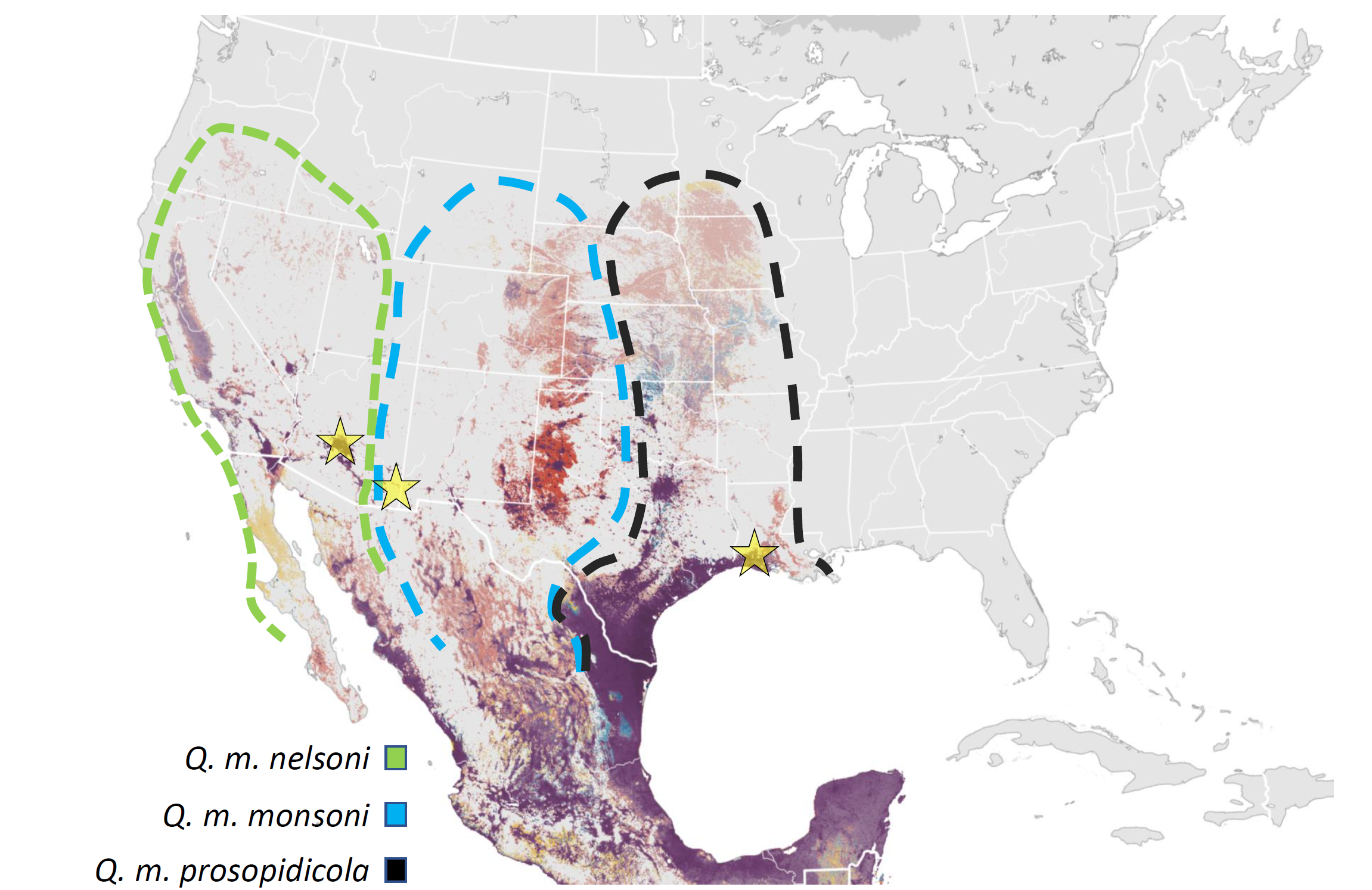
Bird species with large vocal repertoires and geographic ranges are thought to have high plasticity in acoustic qualities in order to match tone, range, and pitch to the heterogeneous soundscape. This is true in oscine birds that learn their songs, such as our study taxon the great-tailed grackle (Quiscalus mexicanus). Q. mexicanus occupies a wide geographic range and is a highly vocal resident species with a large vocal repertoire.

Figure (above). Distributions of the three Q. mexicanus subspecies in the USA. This map depicts the relative abundance of individuals from eBird data (map from Johnson and Peer 2020), and we drew species distributions using range descriptions by Clements et al. 2019. Stars reflect the proposed research areas.
The alarm call vocalization in Q. mexicanus is used by both sexes and is known to vary in tone, range and pitch. Alarm calls signal low intensity excitement, and research in other species has shown that differences in the acoustic qualities of alarm calls reflect the urgency of threats tailored to the receiving audience. Because alarm calls are expected to signal important habitat and receiver-dependent information, we are testing whether Q. mexicanus alarm calls differ between populations and ecological contexts across the US (three US subspecies: Q. m. nelsoni, Q. m. monsoni, and Q. m. prosopidicola, shown in the figure above).
To learn more about this project, please check out our citable preregistration preprint “A study on the role of social information sharing leading to range expansion in songbirds with large vocal repertoires: Enhancing our understanding of the Great-tailed Grackle (Quiscalus mexicanus) alarm call”. Preprint URL: https://doi.org/10.17605/OSF.IO/2UFJ5.
This research is being spearheaded by undergraduate Samantha Bowser (Arizona State University) with the assistance of Dr. Maggie MacPherson (Louisiana State University Museum of Natural Science).